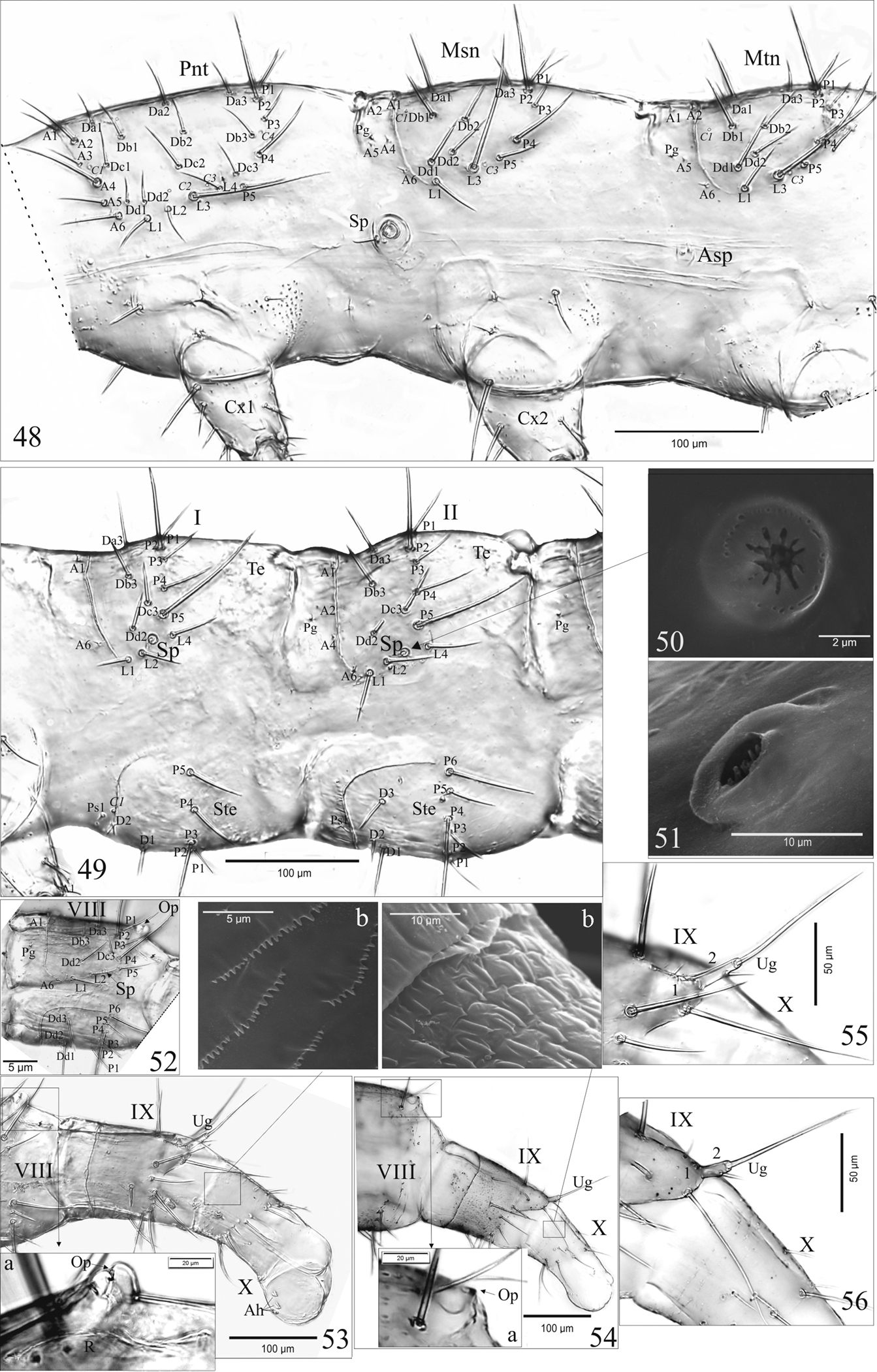
|
||
|
A. talpa (48, 49, 50, 52, 53, 53a, b, 55), O. haemorrhoa (51, 54, 54a, b, 56), mature larva. Thoracal (48) and abdominal segment I–II (49), VIII (52), VIII–X (53, 54) and urogomphus (55, 56) in lateral aspect. Abbreviations: 1, 2, article of urogomphi; VII – X, abdominal segments; A, anterior setae; Ah, anal hooks; Asp, atrophied spiracles; C, campaniform sensilla; Cx, coxa; D, Da-c, discal setae; L, lateral setae; Msn, mesonotum; Mtn, metanotum; Op, opening of gland reservoir; P, posterior setae; Pg, pretergal gland; Pnt, pronotum; Ps, presternal sensilla; R, gland reservoir; Sp, spiracle; Ste, sternite; Te, tergite; Ug, urogomphus. |